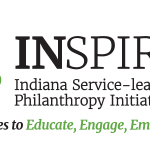“Assessing with PLCs in Mind”
Written by Brian Dinwiddie, Curriculum Coordinator, Community School Corporation of Southern Hancock County
By definition, Professional Learning Communities (PLCs) are more than assessment data, but it is an integral part of their success.
It is imperative that when teachers head back to their classrooms after PLC meetings, they have a specific plan for what actions to take. PLCs are not done for the benefit of administrators, nor are they done for the benefit of teachers. If there is a firmly held belief among educators that PLCs are student-centered, assessments must be designed in a manner which provides the information necessary to determine intentional moves to meet student needs. Once student needs are identified, it becomes clear to staff members what needs to happen next.
Concise, Focused and Informative
Three tenets must be followed when designing common formative assessments. In order to make the PLC process feasible, assessments must be concise to the point that individual items of the assessment can be analyzed during the meeting. How many items? I follow a general rule that the number of tasks on common formative assessments is somewhere between 1 and 8 items. If the essential content and skills cannot be assessed in this number of items, what is deemed essential needs to be reexamined. I’m not saying an effective assessment cannot be larger, but anything larger than that tends to become less focused, and tends to become too large to be addressed efficiently during a PLC meeting.
A focused assessment is based on the essential learning of the unit. It assesses what students will know, understand and/or do as a result of the learning experience. The assessment narrows its focus on the learning target or objective of the lesson/unit. By being a focused assessment, those involved in the PLC meeting are able to judge the performance of each student, identifying trends among student responses.
The type of assessment that is going to be successfully implemented during the PLC process is one which will inform and impact instruction. The aforementioned trends that result from the analysis taking place in a PLC meeting provide teachers with the information they need for instructional purposes. Once those trends are identified, PLC members collaborate to develop strategies and plans to address such trends. Such an assessment requires students to demonstrate thinking and conceptual knowledge, rather than just factual knowledge.
If John Hattie’s research shows that feedback has an effect size of 0.74, in his Zone of Desired Effects, an effective assessment must be designed in a way that allows for that to happen. Concise, focused, and informative assessments give educators the opportunity to provide such feedback in an effective and efficient manner.
Big vs Small Data
Although there are times when it is important for members of a Professional Learning Community to look at standardized assessment results, more time should be devoted to common formative assessments that impact the instructional process. Big data sources such as ILEARN, PSAT, NWEA, and DIBELS are a benefit when examining the impact of programs, curriculum resources, etc. but have much less impact on the day-to-day decisions being made by classroom teachers.
Data measures that are useful at the teacher level include, but are not limited to:
- Common formative assessments
- Checks for understanding
- Exit tickets
- Reflection journals
- Performance assessments
Types of Assessment Items
To quote retired middle school principal Chris Jakicic in a recent Twitter post, “Keep data analysis simple for (common formative assessments). Examine student work one learning target at a time. Make 2 piles-proficiency and not proficiency. For the students not proficient what was their mistake? Plan your response with what their work reveals about their thinking.”
What type of assessment items provide this ability? Open-ended questions, and those that require evidence of student thinking.
Open-ended items provide the depth of knowledge and evidence of student thinking that is required in order to have the type of conversations that lead to specific action. A percentage or number of multiple choice questions correct may help you to evaluate success of instruction, but it’s impact on classroom instruction is minimal. Only a deeper analysis of assessment items provides the necessary information for instructional decisions.
One Final Idea
For those educators who struggle with assessments of this format because they feel that it doesn’t assess enough of the learning that students have done, here’s an idea. Many years ago, during my final undergraduate semester at Franklin College, I took an elective Indiana History course. Not being a History or Social Studies major, it was a struggle for me, and the final exam made me nervous. On that fateful day, I walked into a four-question essay exam, which by number met the criteria of being concise. The first three of those questions were focused and informative, being open-ended and aligned with the essential learning targets of the course. Dr. Lloyd Hunter’s fourth and final question was one I’ll never forget. It simply said this: “Tell me anything else that you know about this topic that was not asked on the test.” I don’t know what grade I got on that exam, or what those first three questions specifically asked, but I’ll never forget that last one.
Professional Learning Communities are an effective component of many successful schools, but only when utilized properly. Using assessments correctly in that process is crucial to that success, and keeping those assessments concise, focused, and informative will help to make that happen.




